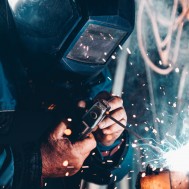Rubber seals are built with high-performance materials that often have exceptional chemical and heat resistors. However, since each polymer is made up of different properties, the correct rubber material must be chosen for specific chemical applications. If the wrong material is chosen, the rubber seal could deteriorate and eventually fail.
There are a variety of different chemical compounds that can attack certain rubber seals, including oil and gas, acid, alkali and more. When a rubber material is exposed to one of these harsh chemicals over an extended period of time, chemical reactions will occur and cause a breakdown of the seal. This can cause a lot of damage to other parts and machines, even if they are not directly attacked.
It’s important to be aware of the properties of your sealing material prior to application to prevent any malfunctions. Here are 3 things about the chemical degradation of rubber you need to know:
1. Chemical attacks can lead to some hefty costs.
Deterioration doesn’t just affect a single part—it affects an entire application. There are a number of costs that are caused by degraded materials that manufacturers may be unaware of. The direct loss or damage of a machine, maintenance costs and indirect losses are just a few to be aware of. Indirect losses may come from leakage that occurs when the rubber seal is damaged. Leakage can be very dangerous and depending on the application, it can cause fires, explosions, power outages facility shutdowns and labor losses.
2. Test Your Materials Before You Select
Chemical compatibility testing should be completed before a rubber material is selected for an application. These tests comparing properties with other rubber materials and assess compatibility with a particular chemical or environment.
By exposing rubber materials to a number of different fluids, gases and chemical environments, you can categorize which materials work for certain applications. Some types of rubber are more permeable to gas, while others have strong chemical resistance for harsher fluids. Chemical compatibility testing will give you the knowledge you need to ensure you are choosing the right material for your sealing application.
3. Outside factors can change an o-rings chemical resistance
When a rubber seal is performing in an application, there are a variety of other factors that can wear down the material, including temperature and pressure. These factors can alter a materials chemical compatibility, making it harder for a seal to resist the effects of harsh chemicals and ultimately deteriorate.
In order to be fully prepared for everything that your rubber seal may endure, it is important to test each rubber material under all temperatures and pressures that the seal may experience. Apple Rubber offers a chemical compatibility guide that will give you insight into which materials can handle specific chemicals, temperature ranges and limitations.
Want to talk more about chemical compatibility?
Tweet us @AppleRubber to continue the conversation.
